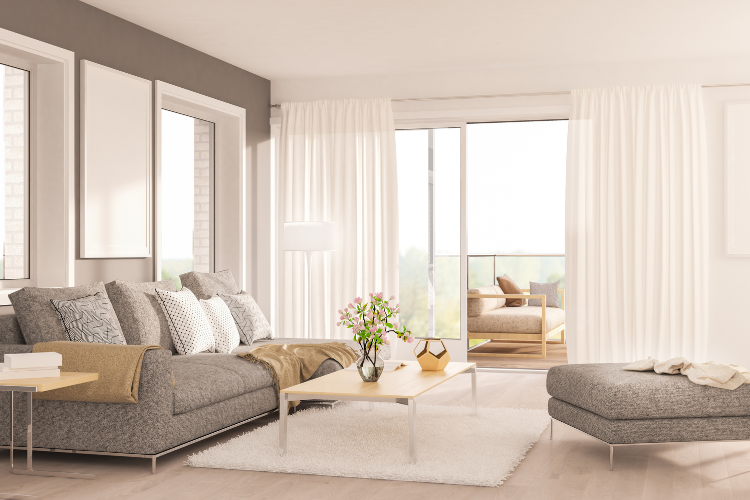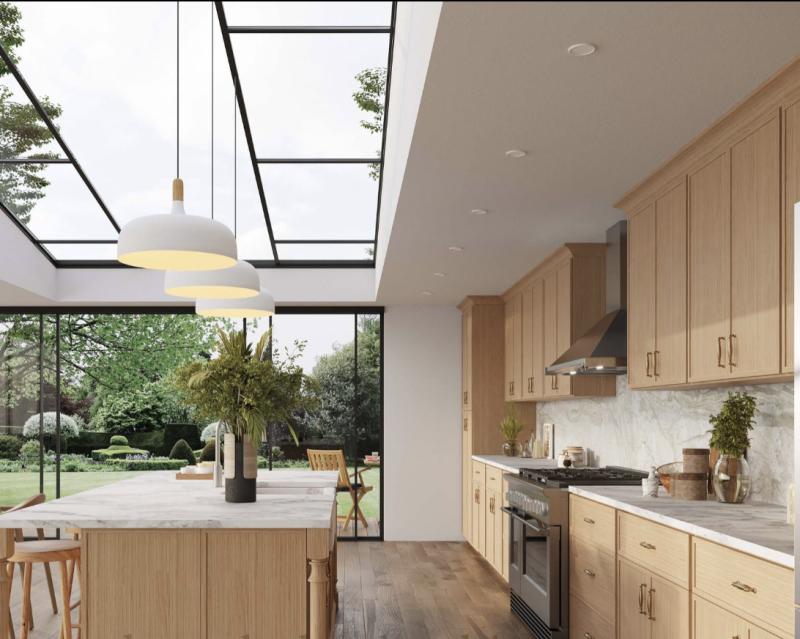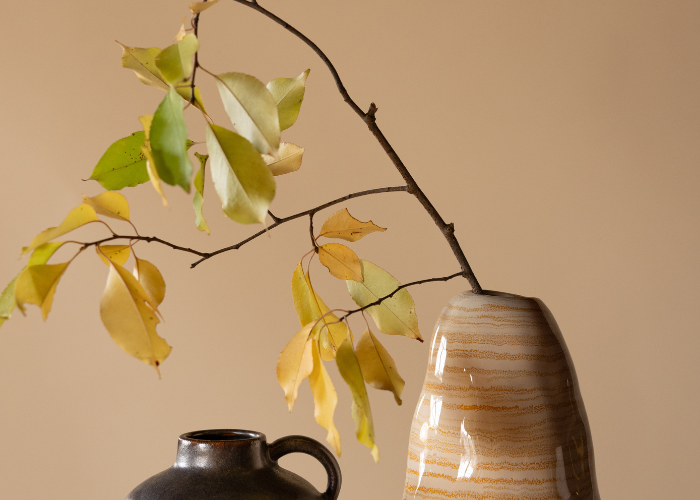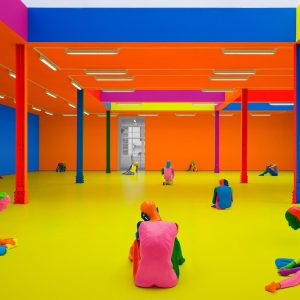
Minimalism is calm, clean, and simple—but it can also be a bit…flat. If you’re living in a space that feels more like a blank canvas than a place with energy, don’t ditch minimalism altogether. You can keep your clean lines and airy vibe while adding just enough drama to make things pop. Here’s how.
1. Go Bold with Color in Unexpected Places
Most minimalist interiors stick to soft neutrals like white, beige, or grey. It’s a safe move, but adding a sudden splash of color can jolt the space to life.
Add a red focal point: The “unexpected red” trick has been everywhere lately. A single red item—like a lamp, chair, or even a piece of pottery—grabs attention instantly. It turns even the most basic setup into something bold.
Use deep, moody tones sparingly: Colors like emerald green, cobalt blue, or charcoal can add edge without making the space feel crowded. A dark throw or painted accent wall can do the trick.
Monochrome layering: Sticking with one color but using multiple shades of it builds dimension. Try layering pale grey, ash, and charcoal in textiles, furniture, and accessories.
2. Play with Lighting and Shadows
Lighting shapes mood. In minimalist spaces, where there’s less visual clutter, it becomes one of the best ways to create drama.
Install sculptural lighting: Swap out basic pendant lights for ones that are more sculptural. Think twisted metal, frosted glass, or asymmetrical shapes. They double as decor.
Layer your lighting: Don’t just rely on ceiling lights. Add a mix of floor lamps, wall sconces, and small accent lights to create zones and depth.
Use dimmers: Control makes all the difference. Dimming the lights adds softness, brings out textures, and changes the vibe instantly.
3. Add One Unexpected Object
Minimalism doesn’t mean you can’t have personality. Just one carefully chosen item can carry a lot of visual weight.
Display a handcrafted sword: A beautifully forged sword like the Tanjiro isn’t just for martial arts fans. It’s a piece of design—sleek, balanced, and full of character. The Samurai Sword Store sells original pieces, including swords inspired by anime and history, that look striking when displayed on a wall or shelf.
Use an antique or vintage object: A vintage radio, rotary phone, or typewriter stands out against clean modern lines. It adds charm and creates contrast.
Pick something odd on purpose: An oversized hourglass, a life-size ceramic pear, or a stone sculpture makes people stop and look. It interrupts the expected, which is what makes it dramatic.
4. Go Oversized with Art
Minimalist walls often feel empty. That’s not a rule—it’s a choice. One oversized piece of art can bring life to your room without breaking the minimalist look.
Use black-and-white photography: Large black-and-white prints can add emotion and contrast without overwhelming the space. Go for images with strong shadows or movement.
Hang abstract art: Even a chaotic abstract piece can work in a minimalist space. The key is to keep it to one canvas and let it dominate its wall.
Lean art casually: Instead of hanging everything, lean large canvases against the wall. It adds height and feels modern and relaxed.
5. Mix Your Textures
When you’re working with a minimal color palette, texture is what keeps things from going flat.
Incorporate raw natural elements: Think raw wood, concrete, or woven fibers. A single wooden bench or chunky jute rug can bring in a ton of warmth and depth.
Use contrasting surfaces: Pair shiny with matte, rough with smooth. A glossy vase on a stone table or a velvet cushion on a leather sofa gives contrast you can feel.
Layer soft elements: Use throws, pillows, and rugs in varying materials. Linen, wool, suede, and cotton all interact differently with light and touch.
6. Frame Negative Space
One of the most underrated design choices in minimalism is learning how to frame what isn’t there.
Use open shelving carefully: Leave space between objects and group by material or tone. The open gaps become part of the design.
Choose leggy furniture: Furniture raised off the ground keeps sightlines open and makes the room feel airy, even when you add dramatic elements.
Float objects on the wall: Floating shelves, vanities, or even nightstands create space between objects and the floor. It plays with shadow and light in a really interesting way.
7. Create Symmetry… Then Break It
Symmetry feels calm, but breaking it slightly adds intrigue.
Pair two large objects, then offset one: Two identical chairs on either side of a table feel tidy. Slide one just slightly forward or angle it differently to make the layout feel intentional, not stiff.
Offset your art: Hang one big piece of art off-center, or group several small pieces in an asymmetrical layout. It keeps the eye moving.
Balance opposites: Combine hard and soft, old and new, light and dark. Balancing tension is what makes minimalist drama work.
8. Add Something Living
Plants are dramatic in the best way. They change with the seasons, add life to a still space, and soften the edges of minimal design.
Choose sculptural plants: Fiddle leaf figs, snake plants, and bird of paradise have bold shapes that make a visual impact. They’re like living art.
Use oversized planters: A single massive pot with a small tree feels intentional and grounded. Terracotta, concrete, or black stone pots work best in minimal spaces.
Group small plants: If big plants aren’t your thing, group three to five smaller ones with different heights and textures. Keep the pots consistent in color.
9. Use Contrast in Scale
Playing with the size of objects in your room can shift the mood instantly. In minimalist spaces, where fewer items are on display, scale becomes even more noticeable—and powerful.
Add one oversized item to a small space: This could be a large floor lamp, a massive vase, or a chunky coffee table. The contrast between the scale of the object and the simplicity of the room makes it stand out more.
Mix large and tiny objects together: Place a tiny ceramic bowl on an oversized tray or a miniature sculpture on a wide console table. The unexpected scale difference keeps the eye engaged.
Use tall objects to draw the eye upward: A tall floor mirror or plant can elongate the space and add presence without taking up much square footage. This subtle shift adds drama without adding clutter.
Conclusion
Minimalist spaces don’t have to feel empty or cold. Adding a touch of drama through art, texture, color, lighting, and even an unexpected object or two can completely change the energy of the room. It’s about balance—keeping the simplicity while letting your personality show through just enough.
Whether it’s a sculptural lamp, a bold red chair, or a beautifully displayed sword from the Samurai Sword Store, small moves make a big impact.
Let your space stay calm, but never boring.







